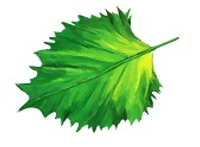
Joginder Nursery
Product details
Portulacaria Afra: The Versatile Elephant Bush
Portulacaria afra, commonly known as the Elephant Bush or Dwarf Jade Plant, is a fascinating succulent that holds a special place in the world of indoor gardening and landscaping. This resilient plant hails from South Africa and is cherished for its unique appearance, ease of care, and adaptability to various growing conditions. Here, we'll delve into the intriguing aspects of Portulacaria afra and explore why it's a must-have for plant enthusiasts.
Appearance and Growth Habit
One of the defining features of Portulacaria afra is its resemblance to the Jade plant (Crassula ovata), which often leads to confusion between the two. However, upon closer inspection, you'll notice distinct differences. The Elephant Bush has small, round, glossy green leaves that grow in opposite pairs along reddish-brown stems. The foliage can take on a reddish or purplish tinge when exposed to bright sunlight or cooler temperatures.
In its natural habitat, Portulacaria afra can grow into a large, bushy shrub or even a small tree, reaching heights of up to 4 meters (13 feet). When cultivated as a houseplant or in containers, it remains much more compact, making it an excellent choice for bonsai enthusiasts.
Cultural Significance
The Elephant Bush holds cultural significance in its native region of South Africa, where it is sometimes referred to as "Spekboom" or "Elephant's Food." This name is a nod to its ecological role as a vital food source for elephants and other browsing wildlife. Beyond its ecological importance, Portulacaria afra has also been used traditionally for its medicinal properties.
Caring for Portulacaria Afra
One of the standout qualities of the Elephant Bush is its low-maintenance nature, which makes it an ideal choice for both novice and experienced gardeners. Here are some key care tips:
Landscaping and Design
Due to its adaptability and aesthetic appeal, Portulacaria afra is a popular choice for landscaping in arid and semi-arid regions. It works well in rock gardens, succulent beds, and desert-themed landscapes. Its ability to withstand periods of drought makes it a valuable addition to water-wise gardens.
Conclusion
Portulacaria afra is much more than just a decorative plant; it's a symbol of resilience and adaptability. Whether you're looking for a striking houseplant, a unique addition to your succulent collection, or a versatile landscape feature, the Elephant Bush offers a rewarding experience for any plant enthusiast. With its charming appearance and undemanding care requirements, this South African succulent continues to captivate hearts around the world.
Similar products